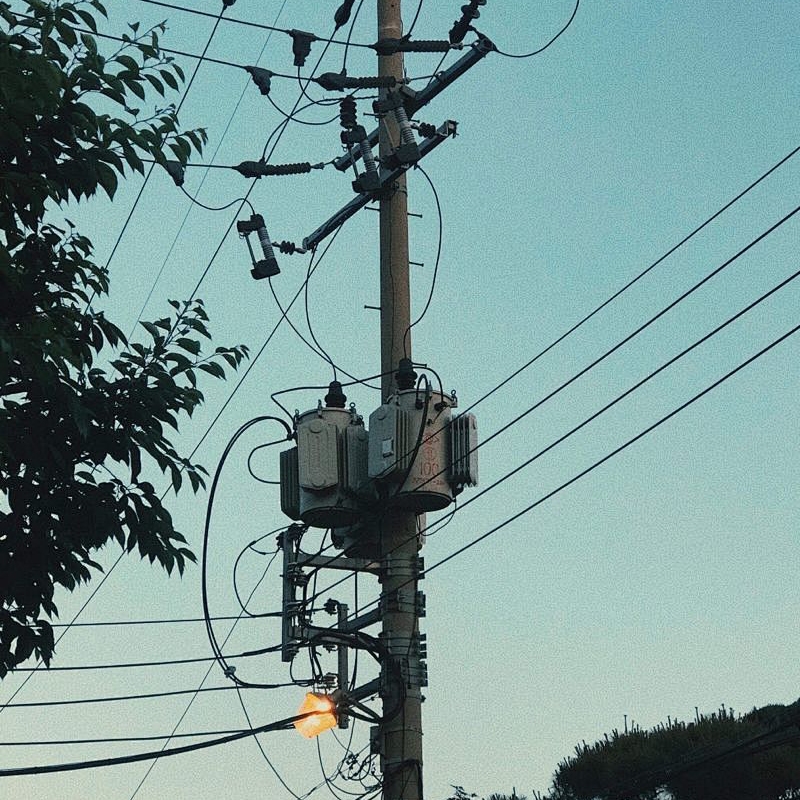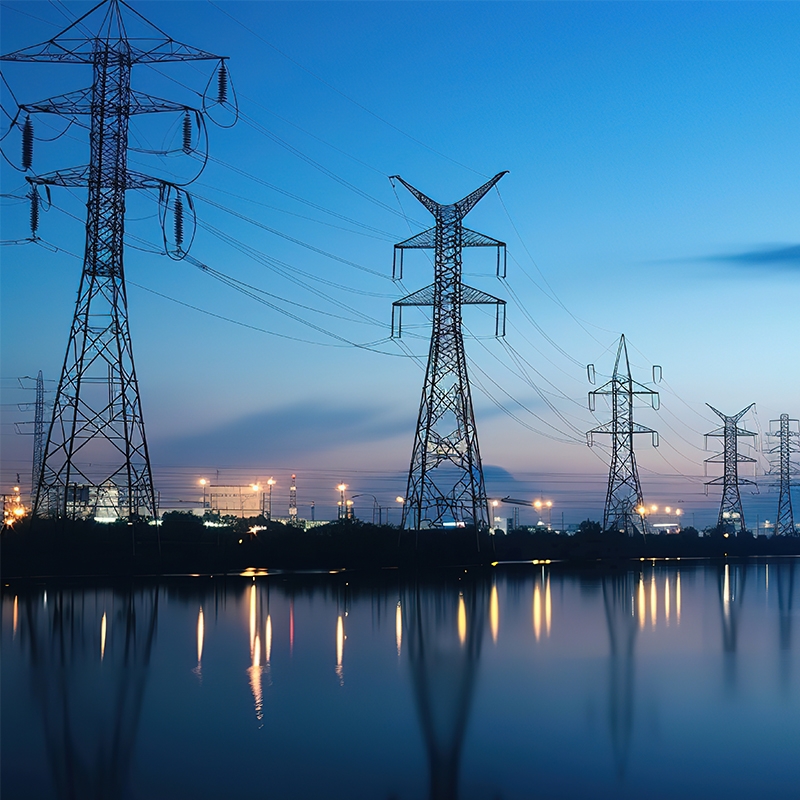Composition and function of oil-immersed transformer
1. Iron core
1) Function
The iron core is the magnetic circuit part of the transformer, which is used to transmit magnetic flux. The iron core is usually made of silicon steel sheets stacked with insulating layers between the silicon steel sheets, which can reduce eddy current losses and improve the efficiency of the transformer.
2) Characteristics
The structure of the iron core is usually laminated or rolled iron core, which is designed to close the magnetic circuit to reduce the magnetic resistance and improve the conduction efficiency of the magnetic flux.
2. Winding
1) Function
The winding is the circuit part of the transformer that conducts current and generates magnetic flux. The winding is usually made of insulated wire wound, divided into high voltage winding and low voltage winding.
2) Characteristics
The voltage between the high voltage winding and the low voltage winding is increased or decreased by electromagnetic induction. The ratio of turns of the winding determines the transformer's transformer ratio.
Step 3: Fuel tank
1) Function
The tank is the shell of the transformer and is used to house the transformer oil, core and windings. It protects the internal components while providing storage space for the transformer oil.
2) Characteristics
The tank is usually made of welded steel plates, filled with transformer oil inside, and can have heat fins or heat pipes outside for cooling the transformer.
4. Insulation oil (transformer oil)
1) Function
Insulation effect: transformer oil has good insulation performance and can prevent short circuit between the winding and the iron core. Cooling action: The transformer oil takes away the heat generated by the winding and the iron core through the circulation flow to maintain the normal operating temperature of the transformer.
2) Characteristics
Transformer oil is usually mineral oil with high flash point, low viscosity and good thermal stability.
5. Cooling system
1) Function
The cooling system is used to reduce the temperature of the transformer to prevent overheating from causing insulation damage or equipment failure.
2) Type
Natural cooling: rely on the heat sink or heat dissipation tube on the surface of the tank to dissipate heat through air convection. Forced oil circulation cooling: forced circulation of transformer oil through the oil pump and heat dissipation through the radiator or cooler.
6. Oil storage tank (oil pillow)
1) Function
The oil storage tank is used to regulate the volume change of the transformer oil. When the transformer oil expands or contracts due to temperature changes, the oil storage tank can store or release the oil to prevent the tank from deformation or damage.
2) Characteristics
The oil storage tank is usually mounted on the top of the tank and connected to the tank by a pipe.
7. Safety airway (explosion-proof pipe)
1) Function
The safety airway is used to prevent fuel tank rupture in the event of a failure inside the transformer. When the pressure inside the transformer is too high, the safety airway breaks or opens, releasing the pressure and protecting the fuel tank.
2) Characteristics
The safety airway is usually mounted on the top or side of the fuel tank and has an explosion proof membrane or pressure relief valve inside.
8. Gas relay (gas relay)
1) Function
Gas relays are used to detect faults inside transformers. When a fault occurs inside the transformer, abnormal gas or oil flow will be generated, and the gas relay will send an alarm signal or trip to protect the transformer.
2) Characteristics
The gas relay is installed on the pipe between the tank and the oil storage tank and can detect light gas (gas) and heavy gas (oil flow).
9. Tap changer
1) Function
The tap-changer is used to adjust the output voltage of the transformer. By switching the tap of the winding, the turn ratio of the winding can be changed, so that the voltage can be adjusted.
2) Type
No load regulator switch: need to be adjusted in the case of transformer outage. On-load regulator switch: can be adjusted when the transformer is running.
10. Insulation sleeve
1) Function
The insulation bushing is used to draw the winding of the transformer to the external circuit while providing electrical insulation.
2) Characteristics
Insulating bushings are usually made of porcelain or composite material with an internal conductive rod for connecting the winding to the external lead.
11. Temperature measuring device
1) Function
The temperature measuring device is used to monitor the operating temperature of the transformer to prevent overheating.
2) Type
Including thermometer, thermal resistance, etc., usually installed on the top of the tank or near the winding.
Ii. Summary
The various parts of the oil-immersed transformer work together to ensure that the voltage can be raised or lowered efficiently and safely. The iron core and winding are the core components, the insulating oil and the fuel tank provide insulation and cooling, and the protective devices such as the cooling system, the oil storage tank, and the safety airway ensure the stable operation of the transformer.




